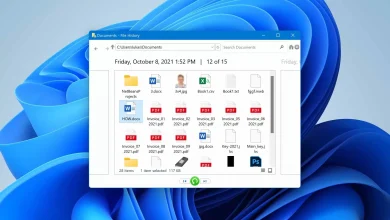What Is Low Code? Low-Code Apps and Platforms Guide

Coding-enhancing platforms are at the forefront of digital transformation that millions of companies around the world are already benefiting from. They help in simplifying the software building process, thereby allowing businesses to reap direct benefits from their data and systems with minimal effort.
The use of low-code platforms is different. With their help, IT departments can create low-code applications, save time, and work efficiently in comparison to class-based development methods. The platforms, however, can go much further, including all development activities. IT professionals can create with them business workflows and systems, as well as other software products and features.
The use of that low code application development platform For Banking and enterprises and low-code code is not limited to one industry or type of company. In fact, businesses from different fields and sizes can use it. It allows them to process and move to digitization in a way that is affordable and easy.
Low-code platforms, in short, provide updated and simple software upgrades. They want less integration from the software developers side in comparison to a regular building. This platform provides the user with an intuitive graphical interface that replaces parts of common code writing. Unlike non-code applications, in low-code upgrades, there is at least a need for input from IT developers or instructors. Users still need to have a technical and background understanding in order to use low-code.
low
What are low-code apps?
In short, low-code platforms can be considered as a quick upgrade option for software experts. لعبه البوكر لعبه البوكر They help in reducing the workload of IT teams as the platform handles buildings and pattern recycling. This is another step needed in today’s business environment, where the demand for software is growing exponentially. The low-code upgrade creates a long-hand-coding system, allowing developers to focus their attention on key elements in projects.
The terms low-code and no-code are often used differently by platform providers, as well as by the media. although the two ideas are still very well explained, there is a clear difference between them.
No-code application platforms allow anyone to create an app – thus giving the concept of ‘citizen development’. betway With such platforms, any user can set up an app in minutes and run it quickly – usually within a pre-configured environment controlled by the IT department. No-code platforms bring flexibility and rapid digital transformation to large companies. شركة المراهنات bwin They also empower private professionals and small businesses – with limited IT resources and expertise – to benefit from the latest software.
As for the under-code platforms – even non-code features, it is not a replacement for traditional software upgrades, but an extension that saves IT professionals’ time and efficiency. They offer non-coding products so manufacturers can use them as ready-made brakes. Thus, no-code items, but still need to be used by professional developers and with the addition of code. While some LCDPs offer no-code features, they are still designed for use by IT professionals or consultants. Clean no-code platforms such as Open as App, however, are based on the understanding that no-code is for everyone – even for people with no IT skills in the background.
How do under-code platforms work?
It is driven by visual system and automatic code generation principles. Utilizing standardized viewing systems for no-code platforms, LCDPs allow users to create applications, workflows, databases, business processes, etc. via a graphic interface rather than through text editing. The platforms provide areas where functionality, data and user interfaces are installed visually, and then can be supplemented with rigid coding if needed. They automatically connect to the back-end and configure data storage and usage. The difference with no-code is that sub-code platforms offer some UX options and designs, but this requires complex ordering.
As non-code, shipping and export-out of the low-cost products are handled by the manufacturer. This, however, should be done by the IT department or technology advice, as it can be stressful. If it is a mobile phone, it also requires app store accounts and compliance procedures. Whatever it is, it involves investing with the company.
Benefits to businesses
The beauty of low-code platforms lies in their strong emphasis on digital business transformation. Most companies want a simple and inexpensive way to improve their IT landscape. The burden of software developers is heavier than ever. Here are a few of the benefits that come with compare Low code alternatives mendix vs powerapps vs outsystems vs Wavemaker low-code platforms.
Rapid improvement practices
The most important error of the low-code is in the speed of software development and processing processes. Using a low-code platform can save hours and hours for the IT department. Instead of creating code and syntax from scratch, developers and general IT staff can use existing resources and build new solutions on their own. Using a low-code platform helps IT teams in lowering their backbone and focusing on more important tasks.
Well-known under-code app platforms
Microsoft Power Platform
The Microsoft Power Platform is one of the undisputed leaders in the low-code field, optimistic about business management systems. It helps companies analyze their data, create customized solutions, and streamline their processes. Microsoft Power Platform allows different team members to create custom applications, thus customizing what is most needed in their teams. In addition to speed and ease of use, it also provides business-grade security and reporting. The business application platform can integrate with Office 365, Dynamics 365, Azure, and many other applications.
Mendix
Mendix is a low-code application platform that aims to make the business better. It allows the creation of a wide range of software components – from business-grade applications to simple tools. Mendix provides the ability to build a visual mode full-stack application. It can be done with no-code, low-code or custom code add-on. This platform promotes collaboration in teams, as well as bridges for business developers and software developers. It also boasts of AI-assisted development.




